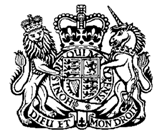Allhallows Staining Church Act 2010
2010 CHAPTER v
An act to remove certain restrictions relating to the use of land comprising the former church of Allhallows Staining, its churchyard, and other adjoining land in the City of London; to make provision for the removal of any human remains from the land and to enable its use for other purposes; and for connected purposes.
[27th July 2010]
Whereas—
The livery company commonly known as The Clothworkers' Company has owned and occupied land adjacent to the site of the former church of Allhallows Staining (“the former church”) in the City of London since the 15th century, on which land has been built its hall:
Provision was made by the Lady Slaney’s (Trust) Estate Act 1869 (c. 8) and an ecclesiastical scheme dated 17 March 1870 to unite the benefices of Allhallows Staining and St. Olave Hart Street, for the removal of the church of Allhallows Staining (other than its tower), for the sale of the site of the former church, including its tower, and the adjoining curate’s residence to The Clothworkers' Company, and for the vesting of the churchyard of Allhallows Staining (“the churchyard”) in the incumbent for the time being of the united benefice:
Pursuant to that Act and scheme, the site of the former church, together with its tower and other adjoining land, was transferred to The Clothworkers' Company by a conveyance dated 18 May 1871 and that conveyance, amongst other things, obliged The Clothworkers' Company not to pull down the tower or otherwise build on the site of the former church, and to fence in the churchyard, landscape it and keep it in good order:
The Clothworkers' Company’s hall and the churchyard were severely damaged by bombing in 1940 and 1941 but The Clothworkers' Company rebuilt its hall and, with the agreement of the incumbent of the united benefice (by then encompassing St. Olave Hart Street, Allhallows Staining and St. Katherine Coleman), restored, drained and paved the churchyard:
Provision was subsequently made by the Allhallows Staining Churchyard Act 1961 (c. viii) for the sale of the churchyard to The Clothworkers' Company by the incumbent of the united benefice and for its maintenance by The Clothworkers' Company as a private open space:
Pursuant to the Act of 1961, the churchyard was duly conveyed to The Clothworkers' Company by a conveyance dated 20 June 1961 which, amongst other things, included restrictive covenants, imposed on The Clothworkers' Company and for the benefit of the incumbent for the time being of the united benefice, in relation to use of the churchyard which were identical to those set out in the Act of 1961:
It is now expedient that the site of the former church, the churchyard, the curate’s residence and other adjoining land should be freed from certain restrictions in order to permit its use so far as the law otherwise allows:
It is expedient that the other provisions contained in this Act with respect to the removal of any human remains, tombstones, memorials and monuments should be enacted:
It is expedient that the other provisions contained in this Act should be enacted:
A plan dated March 2010 showing the land to which the provisions of this Act apply has been deposited in the Office of the Clerk of the Parliaments, House of Lords, the Private Bill Office of the House of Commons, and the office of the Company.
The objects of this Act cannot be effected without the authority of Parliament:
May it therefore please your Majesty that it may be enacted, and be it enacted, by the Queen’s Most Excellent Majesty, by and with the advice and consent of the Lords Spiritual and Temporal, and Commons, in this present Parliament assembled, and by the authority of the same, as follows:—

